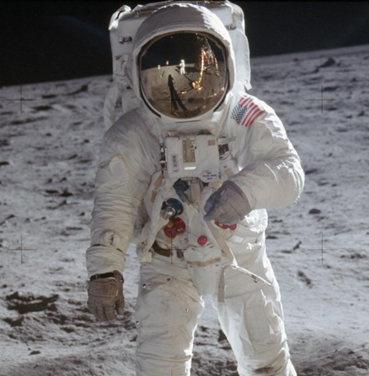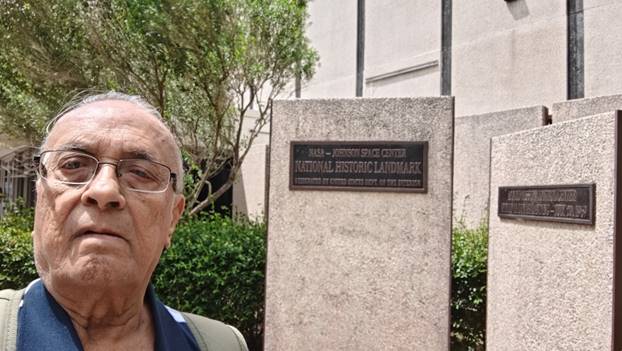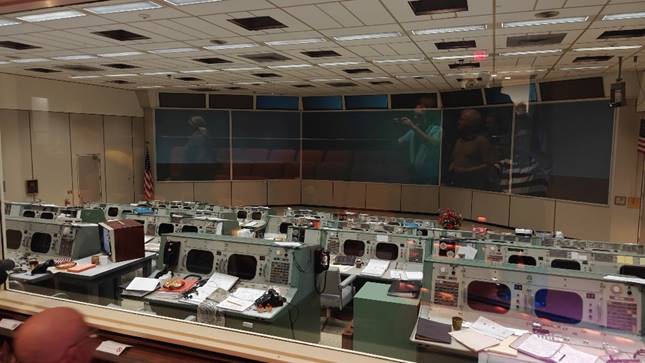Moon Day Musings!
July 20, 1969: One Giant Leap for Mankind
“That’s one small step for [a] man, one
giant leap for mankind”
Neil Armstrong
Astronaut Edwin Aldrin
seen in the reflection walking on the surface of the Moon near the leg of the
Lunar Module (LM) ‘Eagle’ during the Apollo 11 extravehicular activity.
Apollo
11 landing site on the Moon. The image, which was released on March 7, 2012,
even shows the remnants of Neil Armstrong and Edwin Aldrin's historic first
steps on the surface around the Lunar Module (Image credit:
NASA/GSFC/Arizona State University)
(Photos: NASA)
Human footprints were first imprinted on the Moon on Sunday 20th July 1969. The International Moon Day is being observed on this day annually to raise awareness among the public and generate support for
sustainable exploration and utilization of the Moon - our nearest neighbor in
space. On this day (also a Sunday), I recollect my experience
of that eventful day in 1969, and of my visits much later to two major NASA centers associated
with the endeavor.
A slice of history
On 25 May 1961, President John F Kennedy, addressing a
joint session of the US Congress, made a bold promise to land a man on the Moon
and return him safely to Earth before the end of the decade. His prophetic promise came to fruition on 20 July
1969 when astronauts Neil Armstrong and Edwin Aldrin guided the Apollo 11
spacecraft on to the lunar surface excitedly exclaiming, “Houston, Tranquillity Base here, the Eagle
has landed!”
Those were the days when we had no TV in India
and even radio service was primitive. FM was yet to make its debut. BBC and Voice
of America (VOA) were the most popular foreign radio services accessible in the
country via short wave. Their
audio quality was a far cry from what we are used to on FM today. Yet, I was an avid follower of both. The VOA
used to cover NASA’s lunar exploration missions extensively, often with live broadcasts
from several vantage points, especially Kennedy Space Center in Florida and the
(present) Johnson Space Center in Houston, Texas.
For much of the Apollo 11 program, I would sit glued
to the VOA live crackling broadcasts, from launch to splashdown. On that eventful day,
now being celebrated worldwide as Moon Day, VOA was on air non-stop for about
22 hours, from lunar landing to redocking with the mother ship in lunar orbit. I recall having heard vital segments of
this marathon live broadcast, and even making recordings on a fancy transistor tape
recorder I had purchased in Frankfurt on my way back from the USA just two
years previously. Unfortunately, these recordings have not survived.
Incidentally, the conquest of the Moon has been hailed
as one of the greatest technological achievements in human history. I am glad to have been in the prime of my life
when this was played out.
A pictorial recap
In 2017, I was able to set foot on the Kennedy Space Center in Florida during my month-long tour of the USA the prime focus of which was a total solar eclipse on 21 August. A key attraction was the display of a gigantic unused Saturn V launch vehicle which had lifted off the Apollo 11 and subsequent missions of human lunar landings. Here are two pictures of this behemoth:
I am seen in front of the five gigantic thrusters of the first stage of an
actual
Saturn V lunar launch vehicle
A side-on view of part of the gigantic first stage of the Saturn V lunar
launch vehicle
Last year (2024) took me to the USA, again as part of a total solar eclipse visit. Two days before the eclipse on 8 April, I spent a whole day at the Johnson Space Center in Houston, Texas (see an inside view below).
NASA Johnson
Space Center: National Historic Landmark – Designated by
United States
Dept. of the Interior
Below
is a picture of the visitors’ entrance to the Apollo Mission Control Centre now
preserved for posterity as a permanent display.
At the entrance to the Apollo Mission Control Center
Here is a picture of the Mission Control Center at the Johnson Space Center
in Houston, preserved exactly as it appeared at the end of the Apollo lunar
missions:
A memorable picture of the Apollo Mission Control Center from the visitors’
gallery,
with the reflection of me (in stripes) caught in the act of taking the
picture
[The original mission control center underwent a two-year restoration to return the room to a configuration identical to the one on July 20, 1969.]
Moon in the spotliight again!
Just under fifty days from now, on September 7, yet again a Sunday, the full Moon will present a rather strange appearance when it undergoes a total eclipse, with the Earth blocking the sunlight falling on it (see illustration below).
Epilogue
On the day after the Apollo 11 lunar exploration, a colleague and I addressed a gathering of students at my institution, the (then) Regional College of Education, Mysore, remarking how the Moon was no longer the same entity we had all known before, and the human footprints would probably endure till eternity.












1 comment:
I've always wondered how people in India were following the Apollo 11 mission. People in my family were following the newspapers and radio. Some of them were calling it fake, of course.
Post a Comment